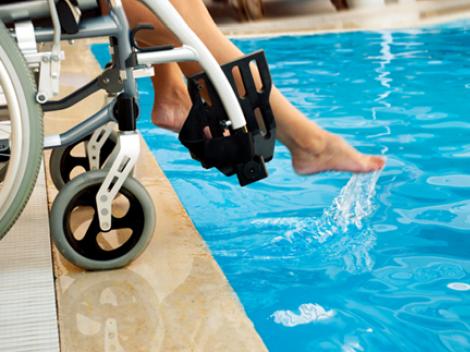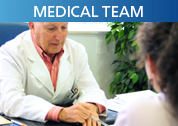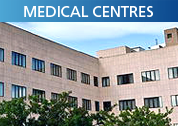
Ankle
Information about ankle rehabilitatio after surgery
Ankle rehabilitation starts after the patient is discharged from the clinic or hospital where they had their operation.
Following ankle surgery it is vital to keep weight off the joint for the full period recommended by the surgeon. The joint must also be stabilised correctly with a suitable brace or cast, which should be kept in good condition. Finally, the vascular and neurological state of the foot should be monitored by examining the nail beds and telling the patient to move their toes regularly.
Rehabilitation treatment
After the cast or brace has been removed from the ankle under supervision from the surgeon, the patient is ready to start rehabilitation treatment:
- A draining massage is given, using upward movements to eliminate lymphatic fluids and stimulate blood circulation from the foot to the pelvic region.
- Contrasting cold water - hot water baths are applied for the same reasons as above, to improve blood supply to the tissues and boost metabolism in the affected area.
- The operation scar is massaged gently to prevent retraction and adhesions deep in the tissues.
- Pulsed magnetic fields and/or low frequency ultrasound treatment is given, to supplement the repair carried out by the orthopaedic surgeon.
- The ankle, tarsal and metatarsal joints and the toes are given assisted manual mobilisation exercises.
- The patient will be given muscle toning exercises to do, starting with isometric and isotonic, followed by isokinetic exercises using increasing resistance (rubber resistance bands).
- The patient will be shown exercises to improve foot and ankle proprioception, using Böhler boards, wobble boards, walking on airbeds, etc.
- Any defects or bad habits acquired during the period of immobility are corrected by a walking retraining programme Exercises include walking up and down a ramp, stairs and between parallel bars if necessary.
- If the operation scar allows (if it has healed correctly) a walking retraining programme can be started in the therapeutic pool.
- This is followed by more intensive work on strengthening the muscles and improving the range of movement through the ankle joint on the stationary bicycle and treadmill.
Maintenance and Practical Advice
- The patient will be assessed for dysmetria (one limb longer than the other) and this will be corrected if necessary with an insole that can be placed inside a normal shoe, if it fits.
- Foot strike is also examined to ascertain if the patient needs made to measure insoles to correct heel alignment, or if they need support for the arch of the foot or cushioning to prevent discomfort in pressure areas underneath the foot.
- Patients should be reminded to keep their body weight down, or lose weight if they are overweight, as ankle joints are placed under less stress if they are not overloaded. Patients are provided with a diet plan monitored by the medical team.
- The physiotherapy unit provides patients who have had foot and ankle operations with a booklet of exercises to do at home, along with explanatory diagrams.
The importance of immediate rehabilitation
- Thorough rehabilitation is essential following an operation of this kind. Rehabilitation should start as soon as possible and patients should try to avoid travelling, making sudden movements or lifting heavy objects in the first few days. Before patients return to their home country, we advise them to undertake at least 8 days of rehabilitation at our Casaverde rehabilitation centre.
- An early start enables muscle tone to be improved; muscles around the affected area become gradually stronger and more powerful as they are worked consistently during treatment. Strong muscles reduce the risk of falls and complications.
- Early rehabilitation leads to a faster recovery of movement in the affected joint and reduces the pain and/or soreness that may develop following an operation.
- Early rehabilitation improves trophism (nourishment of the tissues surrounding the surgery site) and encourages the wound to heal correctly.
- Rehabilitation enables mobility to be recovered faster, enabling patients to walk again with the assistance and guidance of the care team as they learn to re-programme their walking patterns.



